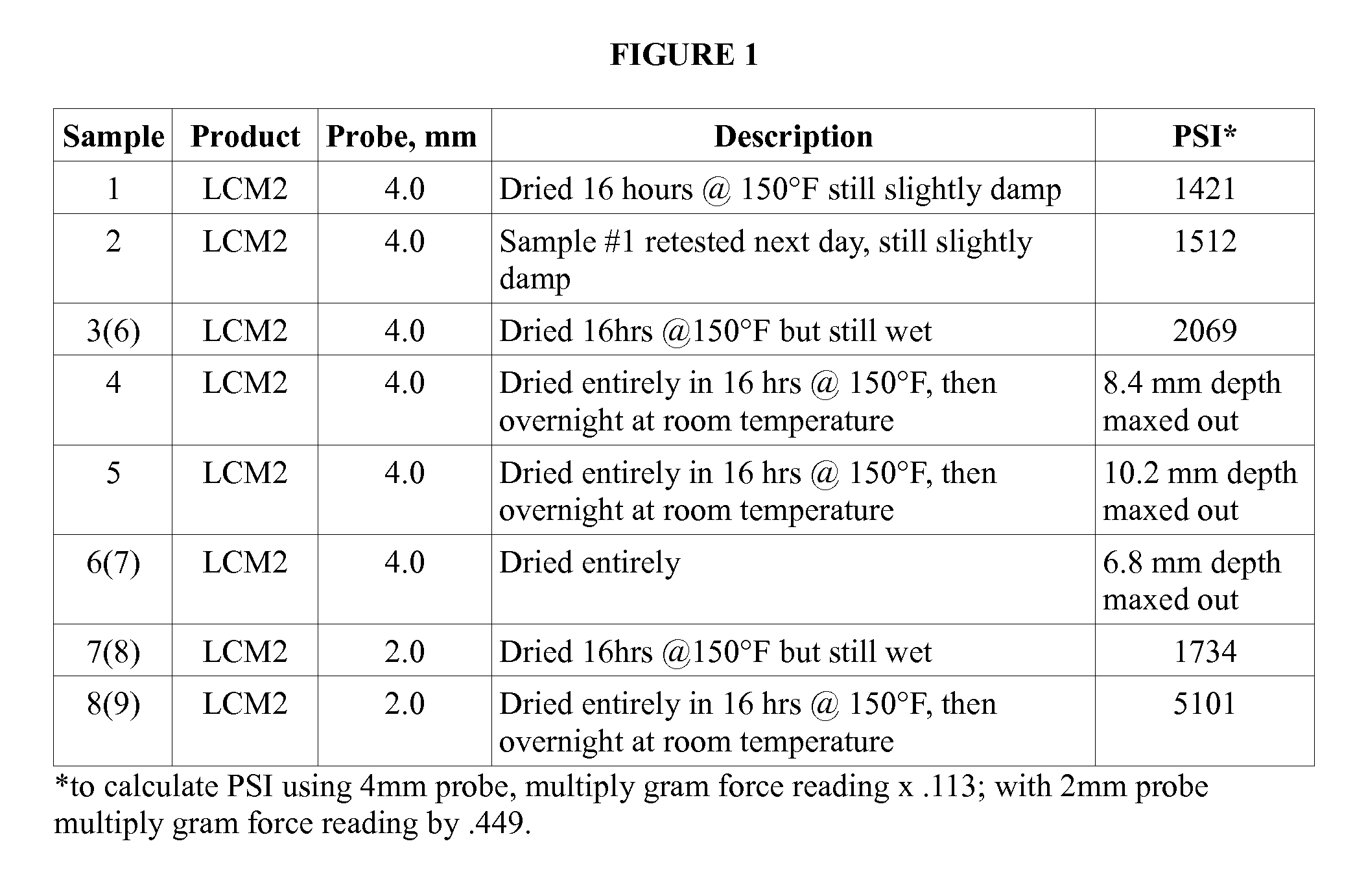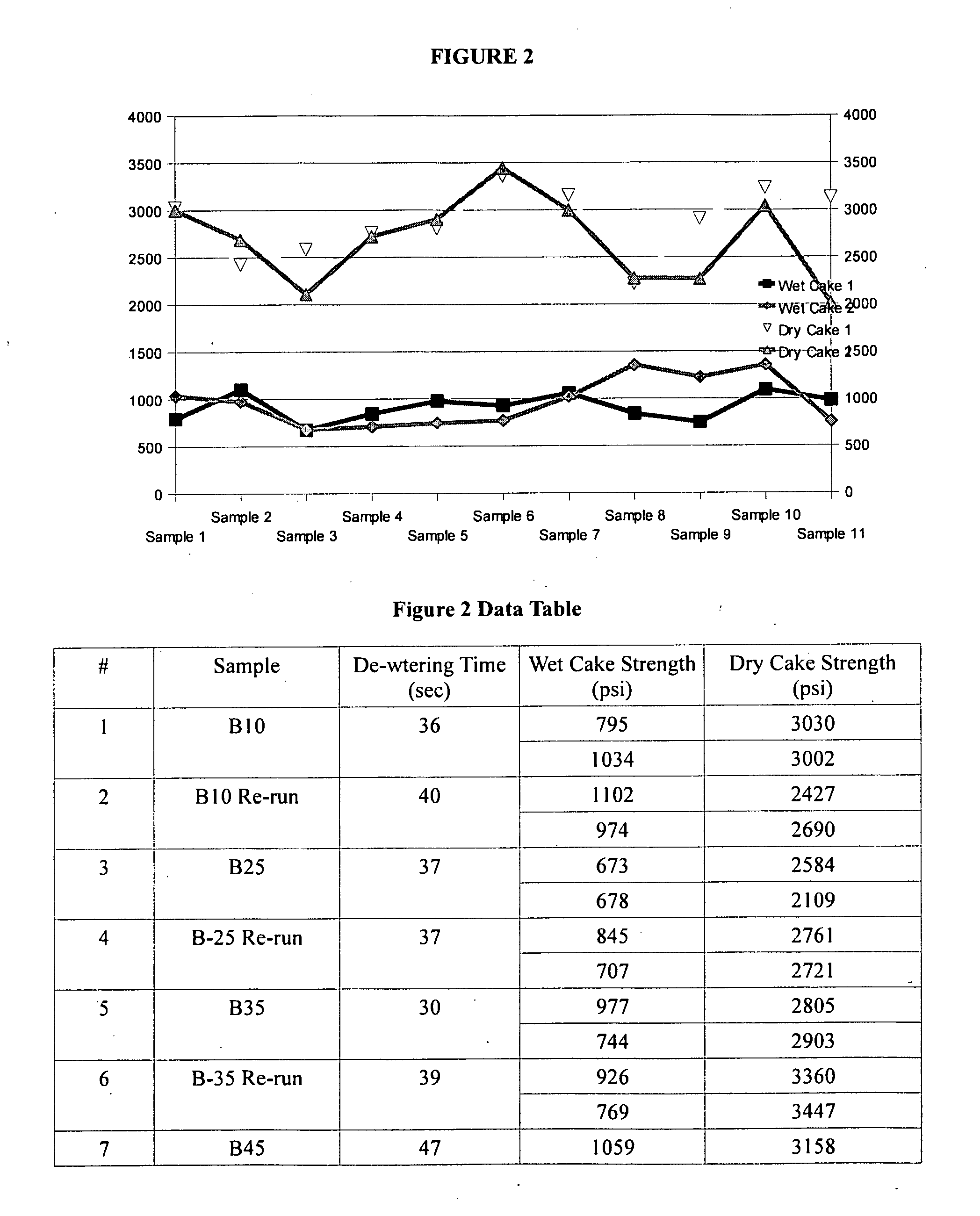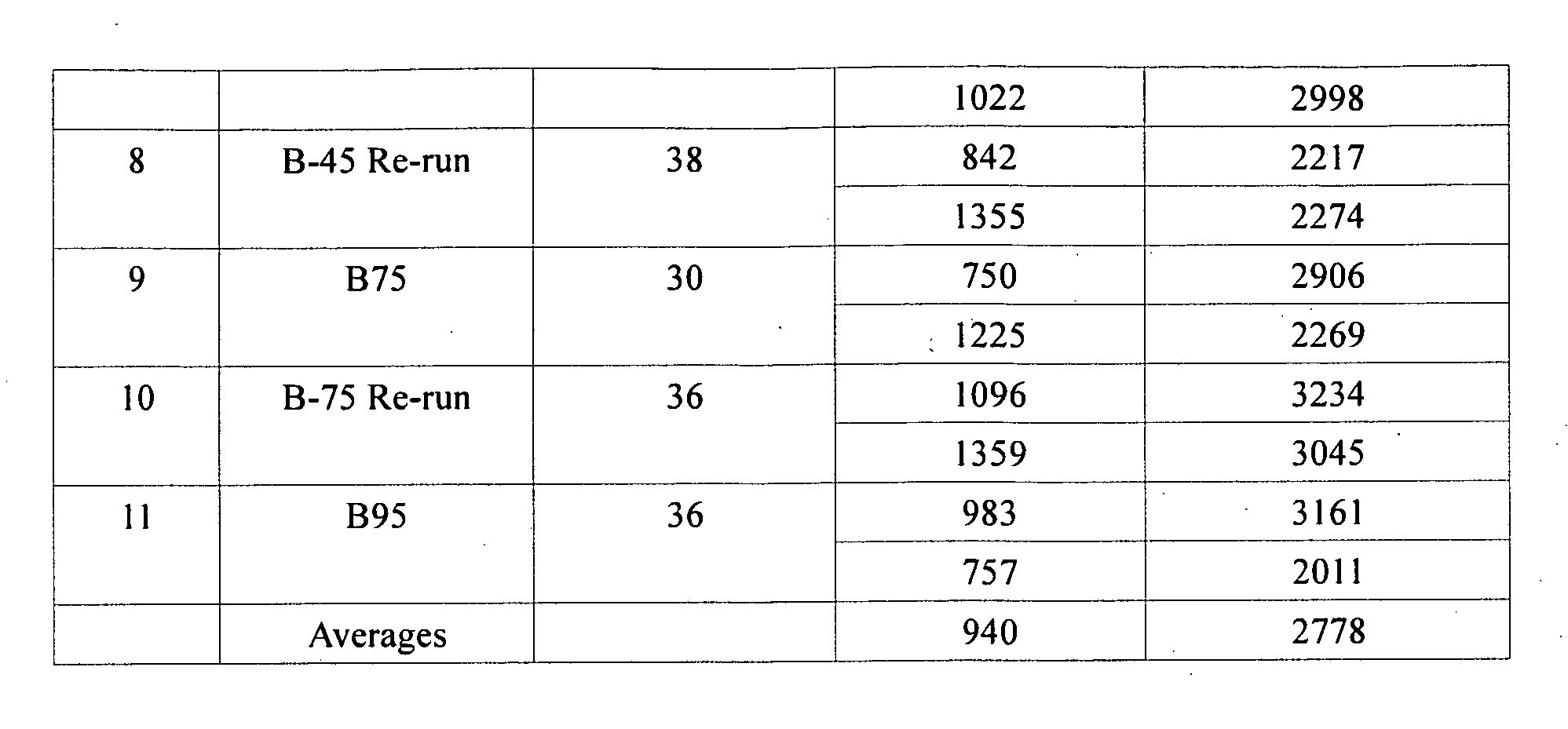Lost circulation composition
a technology of composition and circulation, applied in the direction of earth-moving drilling, chemistry apparatus and processes, wellbore/well accessories, etc., can solve the problems of deficiency or insufficient in regard to specific well requirements, cost, time required, and/or effectiveness, and achieve the effect of high pressur
- Summary
- Abstract
- Description
- Claims
- Application Information
AI Technical Summary
Benefits of technology
Problems solved by technology
Method used
Image
Examples
example 1
[0041]FIG. 1 shows de-watering times and strength characteristics of LCM2. Testing of the compressive strength of the LCM2 was performed by known methods. The purpose of the laboratory testing is to determine the strength and performance of the LCM2 bridge plug by known methods that simulate downhole conditions.
[0042]LCM2 was formulated according to the embodiment stated above comprising of between approximately 37% and approximately 39% by weight of diatomaceous earth as a sealing or bridging component, between approximately 7% and approximately 9% by weight of cellulosic newsprint fibers as a sealing component, between approximately 9% and approximately 11% by weight of walnut shells as a bridging component, between approximately 10% and approximately 12% by weight of wood flour as a sealing component, between approximately 9% and approximately 11% by weight of gilsonite as a wetting component, between approximately 2% and approximately 3% by weight of perlite as a bridging compon...
example 2
[0049]FIG. 2 is a graph and table showing additional de-watering times and strength characteristics of the LCM2 bridge plug by the methods stated above that simulate downhole conditions. The LCM2 was formulated as above in FIG. 1. All sample plugs de-watered in an optimum time of less than 60 seconds. Thus FIG. 2 shows that the LCM2 has repeatable rapid de-watering characteristics combined with strength that increases as the plug looses the liquid phase, and results in an average wet compressive strength of 940 and an average dry compressive strength of 2778 psi for these samples. This retesting and verification of the sample data comparing wet samples to dry samples shows that even though the LCM2 plug is wet in the wellbore it will have a very strong psi to immediately reduce fluid loss while the operator waits for it to completely de-water and dry to gain maximum strength.
example 3
[0050]Testing for the effects of drying time and particulate size were performed on the LCM2 composition as shown in FIG. 3. LCM2 plugs 1-9 were made by the methods described above in FIG. 1 using API standard filter paper. The average thickness of the plugs was 20 mm.
[0051]Three types of the LCM2 composition were compared:[0052]Series A: Laboratory preparation of composition (60-100 microns)[0053]Series B: Production test material (60-100 microns)[0054]Series C: Production test material—coarser grind (350-750 microns)
[0055]Once the plugs were prepared from the samples, three sets of data were obtained from each plug: (1) the psi of the plug immediately following de-watering, i.e., the “wet plug”; (2) the psi of the plug after oven drying at 150 degrees F. for 16 hours; and (3) the psi of the plug after oven drying at 150 degrees F. for approximately 72 hours. All dried plugs, both laboratory and production material, had dried compressive strengths of greater than 2500 psi as verifi...
PUM
| Property | Measurement | Unit |
|---|---|---|
| particulate size distribution | aaaaa | aaaaa |
| pressures | aaaaa | aaaaa |
| densities | aaaaa | aaaaa |
Abstract
Description
Claims
Application Information
 Login to View More
Login to View More - R&D
- Intellectual Property
- Life Sciences
- Materials
- Tech Scout
- Unparalleled Data Quality
- Higher Quality Content
- 60% Fewer Hallucinations
Browse by: Latest US Patents, China's latest patents, Technical Efficacy Thesaurus, Application Domain, Technology Topic, Popular Technical Reports.
© 2025 PatSnap. All rights reserved.Legal|Privacy policy|Modern Slavery Act Transparency Statement|Sitemap|About US| Contact US: help@patsnap.com



